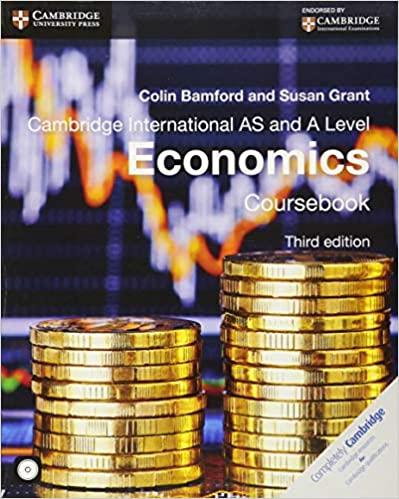Question
Consider the two following scenarios: Scenario 1: A firm operates as a profit maximizing monopolist that produces and sells widgets, and that this firm has
Consider the two following scenarios:
Scenario 1: A firm operates as a profit maximizing monopolist that produces and sells widgets, and that this firm has the following Demand and Marginal Revenue curves below.
(Demand) P = 300 - 2Q (Marginal Revenue) MR = 300 - 4Q
Assume thatthe firm can successfully engage in a price discrimination strategy. MC = AC = 20 for this firm.
Scenario 2: Assume that a firm named "Don't be Naked & Afraid" has a monopoly on the sale of clothing for people who wander naked and afraid around the wilderness for 20-40 days. The equations below provide demand and cost-related information associated with selling this good:
(Demand) P = 200 - 5Q (Marginal Revenue) MR = 200 - 10Q (Marginal Cost) MC = 50 (Average Cost) AC = 50 + (150/Q)
Let's assume this firm sells every unit at the same price. The government believes that even naked people wandering around the wilderness should be able to buy clothing at "cost" and, as a result, the government sets this firm's price equal to their marginal cost (i.e. P = $50).
Given what you know about these firms, which of the following is a true statement:
| a. | the widget-selling firm and clothing-selling firm are both natural monopolies | |
| b. | the widget-selling firm is a natural monopoly, but not the clothing-selling firm | |
| c. | theclothing-selling firm is a natural monopoly, but not the widget-selling firm | |
| d. | neither theclothing-selling firm nor the widget-selling firm is a natural monopoly |
Step by Step Solution
There are 3 Steps involved in it
Step: 1

Get Instant Access to Expert-Tailored Solutions
See step-by-step solutions with expert insights and AI powered tools for academic success
Step: 2

Step: 3

Ace Your Homework with AI
Get the answers you need in no time with our AI-driven, step-by-step assistance
Get Started


